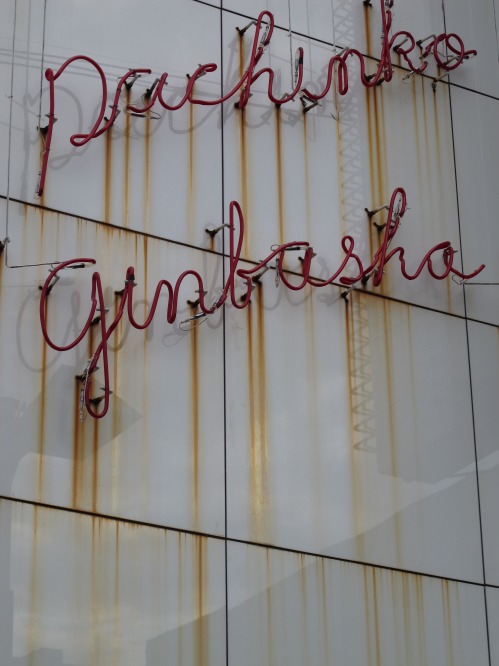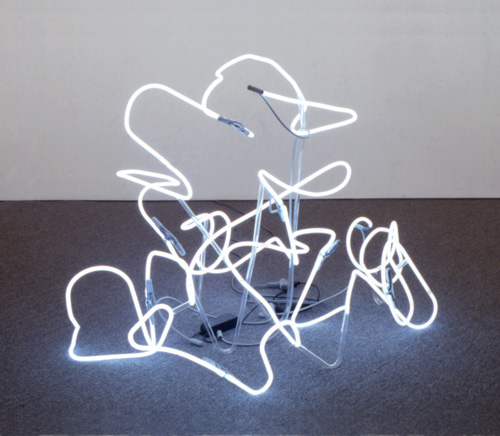
A dismal, depressing subject can be made enjoyable by great writing. And the spirits can be lifted by an awesome photo at the end. These are my takeaways from Richard Hendy's travel/history/economics/politics/apocalyptic decline essay on Amakusa, a hardscrabble group of islands near Kyushu, Japan.
Hendy's blog Spike Japan documents the underside and overlooked, and Amakusa certainly sounds like it's had the short end of the stick since forever, basically, and all they have to show for it is a 15-year-old, $120 million Bridge To Nowhere--designed by Renzo Piano.
But this incredible photo gives me hope. I'm transfixed by this pachinko sign. I mean, just look at those lines. The neonya-san who made that is literally drawing with light in space here. Is there a kanji-based, gestural tradition within the Japanese neon signmaking industry? Have Zen brushstrokes been translated or reperformed and fixed in 3D glass tubing? Or maybe it's Action Painting, frozen in time and space instead of dropped onto the canvas in the barn in Springs?

Perhaps Peter Coffin's 2004 sculpture, Untitled (Line after B. Nauman's The True Artist Helps the World by Revealing Mystic Truths) 1, isn't abstract at all, but documentary. Perhaps the topic could be addressed by a panel discussion at a future symposium, after Amakusa's calligraphic lighting sector has been revitalized, and the island has claimed its rightful place as the Japanese Marfa for the neon arts.
1 which, hello, is now in MoMA's collection.












